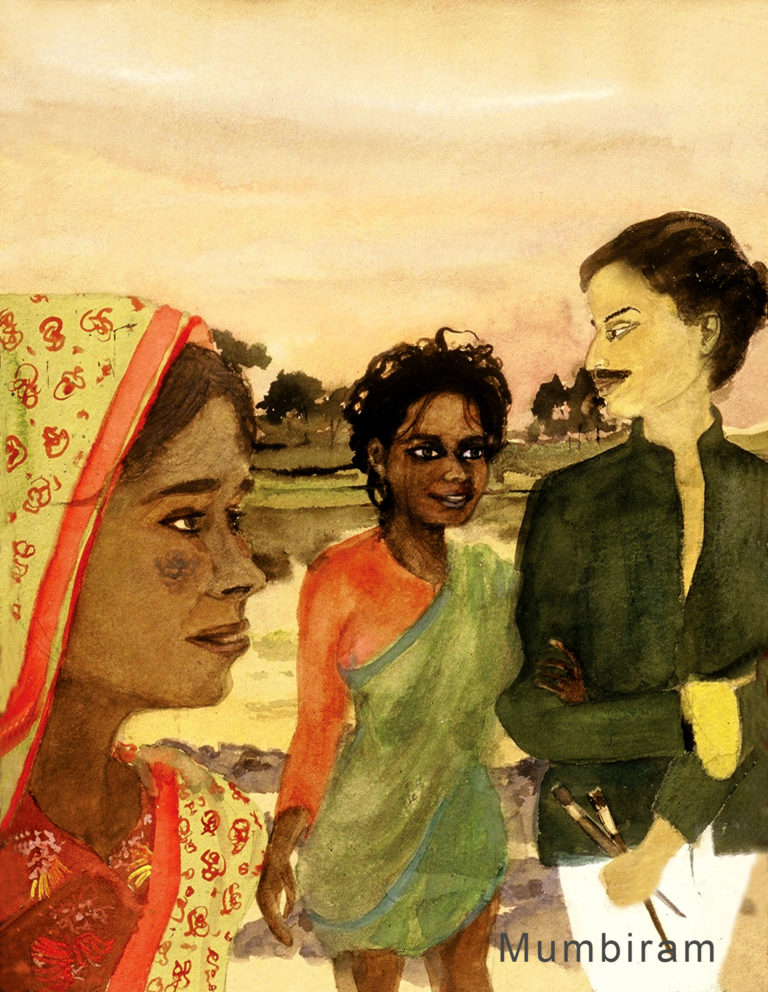The Phasepardhi tribe belong to the ‘lowest’ of the scheduled tribes and castes. During the British rule of India they were considered ‘criminal tribe’. They are like gypsies and live a fiercely independent life. Mumbiram has been admiring their independent and creative spirit even when he was a child. His father, Advocate Ramdas Paranjpe, was one of the first and only lawyers who took on cases of Phasepardhi and defended them in the court. After Mumbiram had returned to India from the US he was able to connect with them again and developed friendships with them that were full of romance and adventure. The Phasepardhi admire the courageous artist as much as he adores their daring. Mumbiram calls the Phasepardhi birdcatchers. Phase means trap. Pardhi are hunters. They used to be experts at setting traps to catch small animals or birds. Today they make ends meet in various other ways.
In this masterpiece the young girl of the Phasepardhi (birdcatcher) tribals and her artist friend are taking a walk along the river. She is in her typical dress. Birdcatcher women are free to wear their sari in that way, pulled up to the knee. Her blouse has long sleeves. That is how they were dressed in previous generations. He is looking at her in appreciation. She is not the typical beauty. Her hair is disheveled. There is no decoration or jewellery. The artist likes her just the way she is, with her wild hair as her only decoration. On the street she goes unnoticed.
Here she is the star. In real life she had been rescued by the artist, when a watchman was about to throw stones at her.
Such and similar treatment is what tribals face on the streets in the big cities. Their belonging to the ‘lowest’ castes of scheduled tribes and castes is totally invisible here. She trusts him and is hanging on to him with her hand under his arm. He is holding two brushes in his hand. Maybe she is so excited because he is going to make a picture of her. The other lady in the foreground is going to accompany them. She is a friend of hers, also a Phasepardhi, from her settlement. She is also smiling and happy for her friend to have made such a unique friendship.
The artist has depicted the early morning atmosphere of the Indian summer successfully and effortlessly. The painting is a virtuoso example of the art of portraiture. The artist has captured the mysterious dramatic tension between the three figures with his understated hands-on approach.

